| Field Trip 1: The Summer Palace, Chestwood National Urban Wetland Park and The Museum of Chinese Gardens and Landscape Architecture (MCGALA) |
|
|
|
Situated in the Haidian District northwest of Beijing, Summer Palace is 9 miles (15 kilometers) from central Beijing. Being the largest and most well-preserved royal park in China, it greatly influences Chinese horticulture and landscape with its famous natural views and cultural interests, which also has long been recognized as 'The Museum of Royal Gardens'. The construction started in 1750 as a luxurious royal garden for royal families to rest and entertain. It later became the main residence of royal members in the end of the Qing Dynasty. |

|
|
Visit 2: Cuihu National Urban Wetland Park |
|
Cuihu National Urban Wetland Park, located at HaidianDistrict, Beijing, is adjacent to Nansha River to the south and covers an area of 157.7 hectares. After the design and construction for almost eight years, the project site has been transformed from a partially deserted farmland to a urban wetland park which provides a stable habitat and a symbiosis of multi-species. The wetland park after construction has greatly improved the water environment of the surrounding watershed, and has expanded the animal’s habitat with wetland birds as the priority; moreover, it is now considered as a demonstration area of wetland education. |
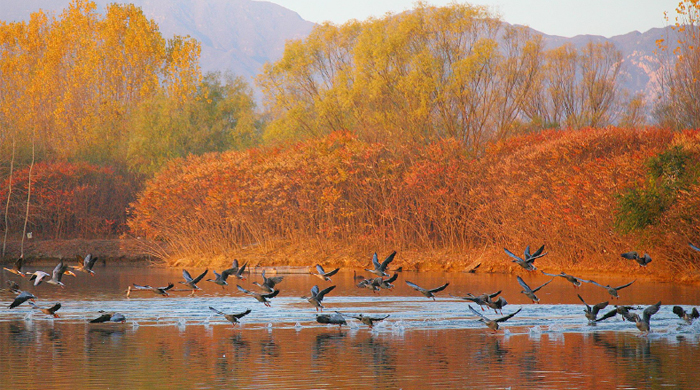
|
|
Visit 3: The Museum of Chinese Gardens and Landscape Architecture (MCGALA) |
|
The Museum of Chinese Gardens and Landscape Architecture (MCGALA), located at the foot of Yingshan Mountain in Fengtai District of Beijing, is the first national museum of its kind in China. The construction was started in 2010, and the museum was opened in May, 2013. Covering an area of 65,000㎡ and a floor space of 49,950㎡, the museum consists of the main building, indoor gardens and outdoor exhibition areas. The main building offers 28,200㎡ for exhibition. As a permanent public cultural venue, MCGALA is an international cultural center for collecting historical garden relics, carrying forward Chinese traditional culture, displaying the charm of garden art and studying the value of gardens. The main service targets of the MCGALA are the general public, primary and middle school students, domestic and foreign tourists, and garden and landscape specialists. It also serves to fully display the long history, brilliant culture and multiple functions of Chinese garden and landscape architecture. Built on the principle of “Chinese Gardens, Ideal Homes,” the MCGALA is designed to display and carry out the art of garden and landscape architecture, promote traditional Chinese culture and witness the revitalization of the Chinese nation. |
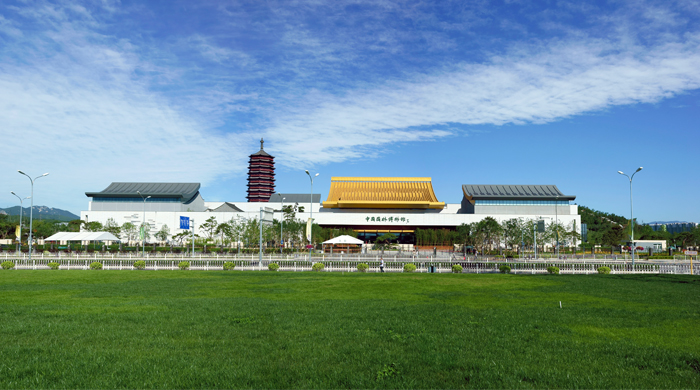
|
| Field Trip 2: Jingshan Park, Beihai Park, and Beijing Olympic Forest Park |
|
|
|
Jingshan Park is a public park covering 23 hectares (57 acres) immediately north of the Forbidden City in the Imperial City area of Beijing, China. The focal point is the artificial hill Jingshan, literally "Prospect Hill". Formerly a private imperial garden attached to the grounds of the Forbidden City, the grounds were opened to the public in 1928. The park was formally established in 1949. It is listed as a Key State Park and is administratively part of both Xicheng and Dongcheng districts in downtown Beijing. |
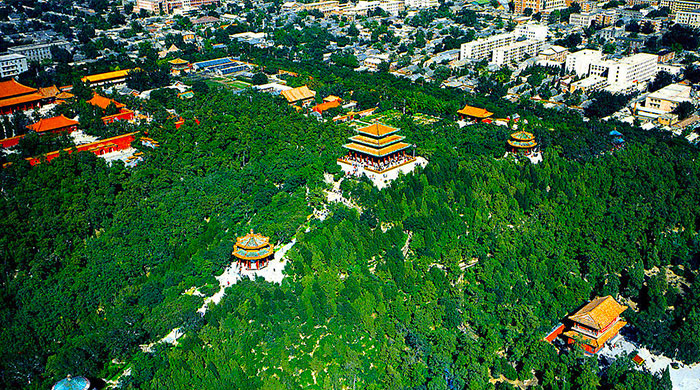
|
|
Visit 2: Beihai Park |
|
Beihai Park or North Sea Park is located half kilometer to the west of the north gate of the Forbidden City. Beihai Park is one of the most popular parks in the city of Beijing. The whole park covers a total area of over 68 hectares, more than half of it is taken up by the Beihai Lake. It is used to be the former palace of the emperors in successive dynasties, called the Winter Palace by Westerners. It has a history of 1000 years. Beihai has existed throughout the Liao, Jin, Yuan, Ming and Qing Dynasties. Most of the buildings now standing was constructed during Emperor Qianlong's regin in the Qing Dynasty (1644-1911 A.D.). Here had been used to be the imperial garden for many dynasties, including Lion, Jin, Yuan, Ming and Qing Dynasties of China. |

|
|
Visit 3: Beijing Olympic Forest Park |
|
Beijing Olympic Forest Park, Beijing, 680ha, 2005-2008 |

|
|
Field Trip 3: Tangshan South Lake and Tangshan Earthquake Museum (appr. 3-3.5 hours drive one way from Beijing to Tangshan City) |
|
|
|
Tangshan Nanhu Eco-city Central Park, Tangshan City, Hebei Province, 630ha, 2008-2010 |
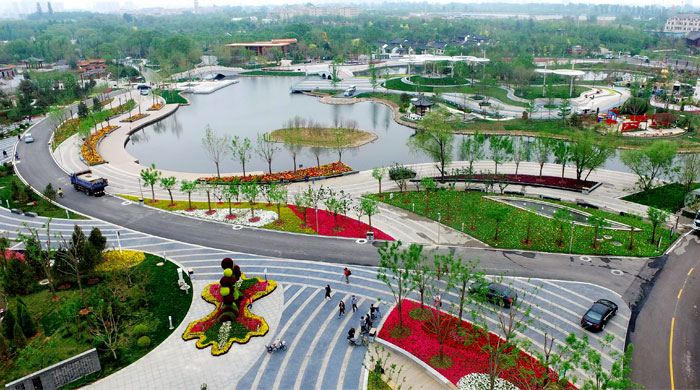
|
|
Visit 2: Tangshan Earthquake Museum |
|
Tangshan Earthquake Museum was designed and built to respect lives and commemorate the dead. The 7.5 Magnitude Tangshan earthquake struck on July 27, 1976 at 19:42 (GMT), (July 28, 3:42 AM local time). Tangshan is a densely poplulated industrial city of a million people 90 miles east of Bejing. The intitial quake was followed by a major aftershock 15 hours later. Official estimates put the death toll at over 240,000, although unofficial sources estimates run as high at 655,000, with 800,000 injuries. This is the greatest death toll recorded for an earthquake in the last 400 years. Damage in the city was widespread and devastating, with 93% of the buildings in the city destroyed. There was major damage that put hospitals, water pumping stations and sewage lines out of commision. Relief workers attempting to help caused a massive traffic jam on the only road left open into the area. Most roads were covered in debris and riddled with fissures. Neighbors organized teams to dig out survivors immediately following the quake. The damage was worst in areas with deeper, sandy soil and a high water table where the shaking tends to be more pronounced. In areas with bedrock closer to the surface, buildings did much better. Building codes were not stringent enough to protect against a quake of this magnitude. |

|
|
Field Trip 4: Qiao Yuan Park, Tianjin Cultural Center, and Concessions in Tianjin (appr. 2.5 hours drive one way from Beijing to Tianjin City) |
|
Visit 1: Qiao Yuan Park |
|
In early 2006, in response to residents’ call for environmental improvement of the site, the municipal government of Tianjin contracted the landscape architect with the difficult task of an immediate transformation of this degraded site. The overall design goal for this project is to create a park that can provide a diversity of nature’s services for the city and the surrounding urban residents, including: containing and purifying urban storm water; improving the saline-alkali soil through natural processes; recovering the regional landscape with low maintenance native vegetation; providing opportunities for environmental education about native landscapes and natural systems, storm water management, soil improvement, and landscape sustainability; creating a cherished aesthetic experience |
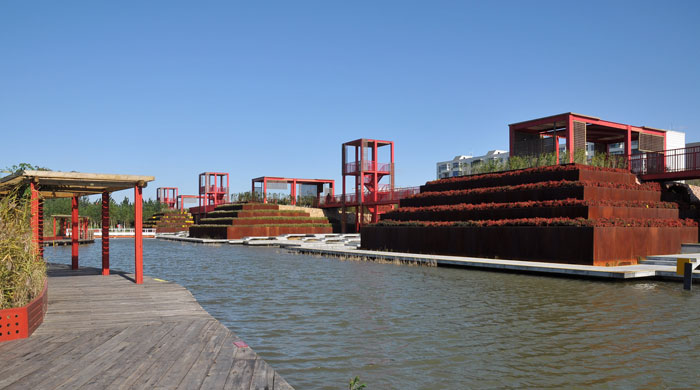
|
|
Visit 2: Tianjin Cultural Center |
|
The largest public cultural facility of North China’s Tianjin municipality, the Tianjin Culture Center has been called the city’s “living room” and has been open to the public since May 19. With public cultural venues, a city park, a leisure center and an activity space for teenagers, the Tianjin Culture Center serves as an exhibition center of high-end arts and a living area for citizens, popularizing culture and art. Covering 900,000 square meters, the cultural center is a project that promotes cultural diversity and benefits generations to come. It is composed of the Tian jin Museum, an art gallery, a library, a theater, Sunshine Park and Civic Square as well as a public transportation hub, infrastructure and other supporting facilities. |

|
|
Visit 3: Concessions in Tianjin |
|
The Concessions in Tianjin were concession territories ceded by the Chinese Qing dynasty to a number of European countries, the U.S. and Japan within the city of Tianjin. At that time, Tianjin was also transliterated as Tientsin (sometimes spelled Tien-Tsin). There were nine concessions in old Tianjin altogether. Prior to the 19th century, the Chinese were concerned that European trade and missionary activity would upset the order of the empire. |
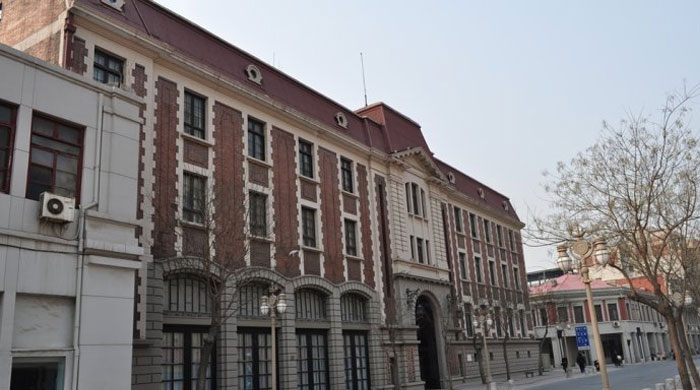
|
| Field Trip 5: Mutianyu Great Wall and Experience Urban and Rural Development in Beijing Suburbs |
|
|
|
The Mutianyu Great Wall is one of the best-preserved and best-known Great Wall sections. Compared with the top-notch Badaling, Great Wall at Mutianyu is less crowded, thus a good destination on hot holidays for a Great Wall tour at ease. |

|
|
Visit 2: Experience Urban and Rural Development in Beijing Suburbs |
|
From the hustle and bustle of Beijing's Fourth Ring Road, we will drive along the crisscrossing expressways to the northern suburbs, and start a vivid and meticulous tour, all the way to witness the subtle transition from urban area to the suburbs and land evolution of urban fringe; along the meandering terraced rice paddies, let’s explore the changes of land use around the Great Wall in the past few decades, look back on China's agricultural transformation, reflect on the blending ofsuburban natural environment management and ecological environment management, and finally appreciate the amazing landscape after the re-development of agriculture-based leisure village. |

|
